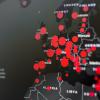
Bringing together a wide range of stakeholder viewpoints, IIASA has developed an approach to identify strategic policies for COVID-19 as well as future pandemics.
As COVID-19 spread across the world in the spring of 2020, governments faced great uncertainty over how the pandemic would play out and struggled to decide what measures to deploy. The response was often inconsistent between neighboring countries and regions.
“Such inconsistency might undermine public confidence and can lead to inefficient usage of resources,” says Nadejda Komendantova, who leads the Cooperation and Transformative Governance Research Group in the IIASA Advancing Systems Analysis Program.
What’s more, strategy decisions did not systematically include costs to the economy, society, and long-term health.
Komendantova has now developed a decision-support framework for dealing with pandemics working alongside IIASA colleagues Love Ekenberg and Mats Danielson, as well as Adriana Mihai at the University of Bucharest and Tobias Fasth and Vasilis Koulolias at Stockholm University.
The framework accounts for health risks, economic impacts, and other factors as well as differing points of view.
“Most of the early decisions were dominated by epidemiology alone,” says Komendantova. “Our idea is that they should be based on the view of other stakeholders too, including experts from government, healthcare, business, academia, and NGOs. Integrating such a wide range of inputs should improve the quality of the strategy output and encourage broad acceptance of the results.”
The first step was to gather those viewpoints. In a case study on COVID-19 policy in Romania, this was done through an online survey. Participants were asked to give their relative preference for four possible levels of pandemic response, ranging from very light intervention up to a form of lockdown. Opinions generally favored the highest level of response, the one that was actually used in Romania in early 2020. The experts also ranked the importance of various criteria, including direct fatalities from COVID-19, short-term economic losses, and effects on education and human rights.
The team then used two mathematical optimization models to combine these preferences and rankings with projections from models of epidemiology and economics. The result favored the third level of response, which includes some social distancing, but stops short of lockdown.
Since then, the framework has been used in Jordan and Botswana. In Botswana, the framework’s recommendation was included in national policy. To prepare for future crises, Komendantova suggests that a working group of stakeholders should be set up in advance, ready to provide their input, so the framework can be deployed quickly.
This approach can be adapted to other policy questions where there are several clashing criteria and interests, for example, energy strategies where different people may prioritize security, price, access, or the environment. It is a flexible tool that stands ready to be used whenever another crisis hits the planet.
